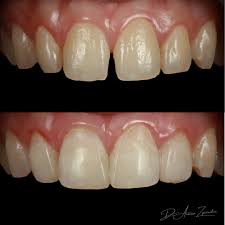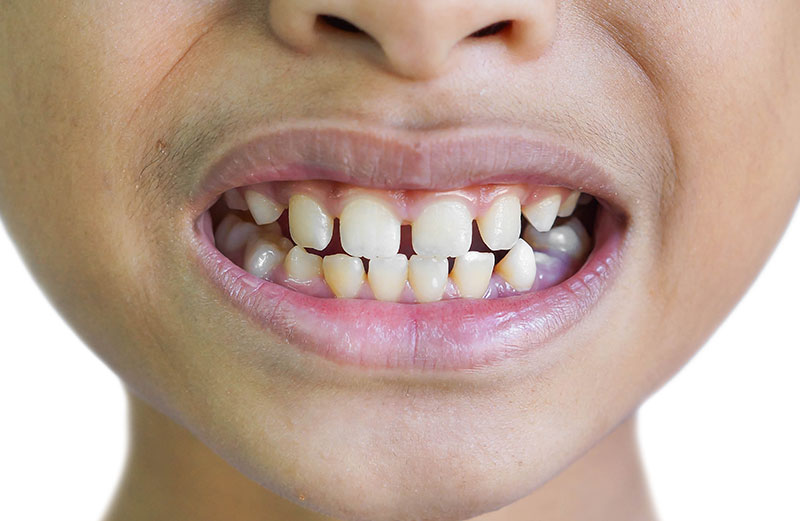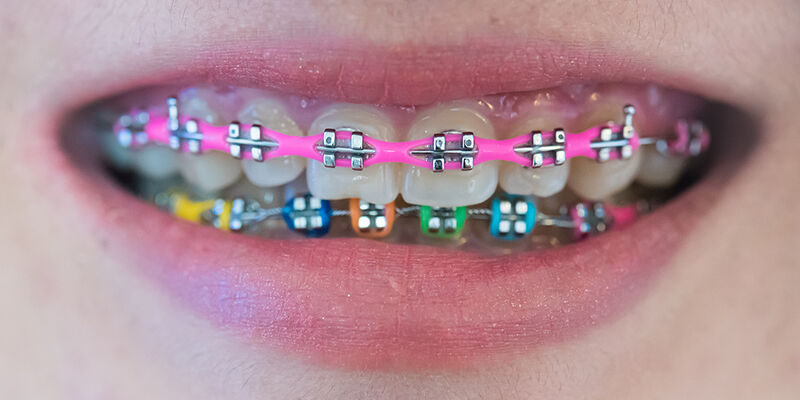Midline diastema closure with composite

A midline diastema refers to the gap between the two upper front teeth. For some, this gap is a charming and unique feature, but for others, it can be a source of self-consciousness and a desire for a more uniform smile. One of the most popular and effective methods for addressing this issue is midline diastema closure with composite. This comprehensive guide will explore what a midline diastema is, the causes behind it, and the various options available, with a focus on composite resin bonding as a solution.
Understanding Midline Diastema
A midline diastema is a gap or space between the two upper front teeth, medically referred to as the central incisors. It can occur for several reasons and may be present in both children and adults. Understanding the underlying cause of the diastema is crucial for determining the most appropriate treatment.
Common Causes of Midline Diastema:
- Genetics: Diastema can be hereditary, meaning it runs in families. If parents or grandparents had a gap, it’s likely their children might have one too.
- Frenum Attachment: The labial frenum is a piece of tissue connecting the inside of the upper lip to the gums above the front teeth. If this tissue is too large or extends too low, it can push the teeth apart.
- Tooth Size Discrepancy: If the teeth are too small for the size of the jaw, gaps can occur.
- Habits: Childhood habits like thumb sucking, tongue thrusting, or prolonged use of a pacifier can contribute to the formation of a diastema.
- Gum Disease: Advanced periodontal disease can lead to bone loss and gum recession, which can cause teeth to shift and create gaps.
- Missing Teeth: The loss of a tooth, particularly adjacent to the front teeth, can cause shifting that leads to a gap.
Diagnosing Midline Diastema
Diagnosing the cause of a midline diastema is the first step in determining the appropriate treatment. This typically involves:
- Visual Examination: A dentist will examine the teeth and gums to identify the presence and extent of the gap.
- X-rays: Dental X-rays can reveal underlying bone structure, the positioning of the teeth, and any issues with the roots.
- Frenum Assessment: The dentist may check the attachment of the labial frenum to see if it contributes to the gap.
- Bite Analysis: Evaluating how the upper and lower teeth come together can help identify any alignment issues.
Midline Diastema Closure with Composite
One of the most effective and minimally invasive treatments for closing a midline diastema is the use of composite resin. This method, known as dental bonding, involves applying a tooth-colored resin to the teeth on either side of the gap to close it. Here’s an in-depth look at the process and its benefits:
What is Composite Resin?
Composite resin is a tooth-colored material made of plastic and fine glass particles. It is used in various dental procedures, including fillings, veneers, and bonding, due to its durability and ability to match the natural color of teeth.
Procedure for Midline Diastema Closure with Composite:
- Consultation and Planning: The first step is a consultation with a dentist to discuss the patient’s goals and evaluate the teeth. The dentist will determine if composite bonding is the appropriate solution.
- Preparation: The teeth may need slight etching to create a rough surface for the resin to adhere to. This process is usually painless and requires minimal alteration of the natural tooth structure.
- Application: The dentist applies the composite resin in layers to the teeth on either side of the diastema. The resin is carefully shaped and molded to match the natural contours of the teeth.
- Curing: Once the resin is in place, a special light is used to harden or cure the material, bonding it securely to the teeth.
- Finishing Touches: The dentist will polish the resin to ensure it blends seamlessly with the natural teeth, providing a smooth and aesthetically pleasing finish.
Benefits of Midline Diastema Closure with Composite:
- Aesthetic Improvement: Composite resin bonding provides an immediate improvement in the appearance of the teeth, closing the gap and creating a more uniform smile.
- Minimally Invasive: Unlike other treatments such as veneers or crowns, composite bonding requires minimal removal of the natural tooth structure.
- Cost-Effective: Dental bonding is generally more affordable than other cosmetic dental procedures.
- Quick Procedure: The entire process can usually be completed in one dental visit, providing instant results.
- Versatile and Reversible: Composite resin can be easily adjusted or removed if necessary, making it a flexible treatment option.
Maintenance and Longevity
While composite resin is durable, it is not as strong as natural teeth or other dental materials like porcelain. Proper care is essential to maintain the results of midline diastema closure with composite. Here are some tips for maintaining bonded teeth:
- Good Oral Hygiene: Regular brushing and flossing are crucial to prevent decay and staining around the bonded area.
- Avoid Hard Foods: Biting into hard foods like ice, nuts, or hard candies can chip the composite resin.
- Regular Dental Check-Ups: Routine visits to the dentist will help ensure the bonded teeth remain in good condition.
- Avoid Staining Substances: Limit consumption of coffee, tea, red wine, and other staining substances to keep the resin looking its best.
Alternative Treatments
While composite resin bonding is an excellent option for many patients, it may not be suitable for everyone. Alternative treatments for midline diastema closure include:
- Orthodontic Treatment: Braces or clear aligners (such as Invisalign) can gradually move the teeth into the correct position, closing the gap.
- Porcelain Veneers: Thin shells of porcelain are bonded to the front surface of the teeth, providing a durable and natural-looking solution for closing gaps.
- Dental Crowns: Crowns can be placed over the teeth to close the gap, especially if the teeth are also damaged or have other cosmetic issues.
- Frenectomy: If the gap is caused by a prominent labial frenum, a minor surgical procedure to remove or reposition the frenum may be necessary.
Choosing the Right Treatment
Selecting the appropriate treatment for a midline diastema depends on several factors, including the size of the gap, the underlying cause, and the patient’s preferences and budget. Here are some considerations for choosing the right treatment:
- Extent of the Gap: Larger gaps may require orthodontic treatment, while smaller gaps can often be addressed with composite bonding or veneers.
- Cause of the Diastema: Understanding the cause of the gap is crucial for selecting the most effective treatment. For example, if the gap is due to a prominent frenum, a frenectomy may be necessary.
- Aesthetic Goals: Patients seeking a quick and minimally invasive solution may prefer composite bonding, while those looking for a more durable and permanent solution might opt for veneers or crowns.
- Budget: Composite bonding is generally more affordable than veneers or orthodontic treatment, making it an attractive option for patients on a budget.
Conclusion
Midline diastema closure with composite resin is a highly effective and minimally invasive solution for those seeking to close the gap between their upper front teeth. The procedure offers immediate aesthetic improvement, is cost-effective, and requires minimal alteration of the natural tooth structure. While composite bonding is an excellent option for many patients, it is essential to consult with a dental professional to determine the best treatment based on individual needs and preferences. With proper care and maintenance, composite resin bonding can provide a beautiful, gap-free smile that enhances both appearance and confidence.
Related to read:
Best Oral Hygiene Practices For Optimum Oral Health.
How to Whiten Teeth Naturally?
How to keep your gums healthy and disease-free?
References
To ensure the information provided is accurate and up-to-date, the following sources were referenced:
- American Dental Association. (n.d.). Plaque and Tartar. Retrieved from ADA website
- Mayo Clinic. (n.d.). Dental Plaque. Retrieved from Mayo Clinic website
- National Institute of Dental and Craniofacial Research. (n.d.). Periodontal (Gum) Disease. Retrieved from NIDCR website








